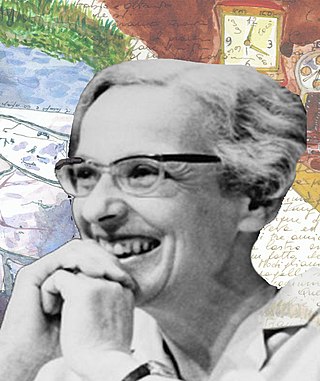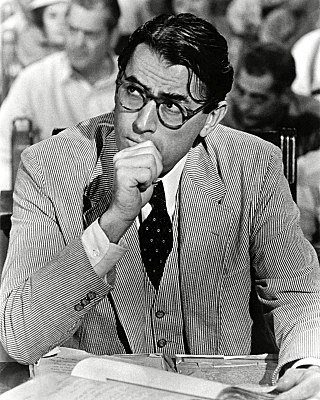
Carl Gustav Jung was a Swiss psychiatrist and psychoanalyst who founded analytical psychology. Jung's work has been influential in the fields of psychiatry, anthropology, archaeology, literature, philosophy, psychology, and religious studies. Jung worked as a research scientist at the Burghölzli psychiatric hospital, in Zurich, under Eugen Bleuler. Jung established himself as an influential mind of his time, developing a friendship with Sigmund Freud, founder of psychoanalysis, conducting a lengthy correspondence, still paramount to their joint vision of human psychology. He is highly regarded as one of the most influential psychologists of all time.
Collective unconscious refers to the unconscious mind and shared mental concepts. It is generally associated with idealism and was coined by Carl Jung. According to Jung, the human collective unconscious is populated by instincts, as well as by archetypes: ancient primal symbols such as The Great Mother, the Wise Old Man, the Shadow, the Tower, Water, and the Tree of Life. Jung considered the collective unconscious to underpin and surround the unconscious mind, distinguishing it from the personal unconscious of Freudian psychoanalysis. He believed that the concept of the collective unconscious helps to explain why similar themes occur in mythologies around the world. He argued that the collective unconscious had a profound influence on the lives of individuals, who lived out its symbols and clothed them in meaning through their experiences. The psychotherapeutic practise of analytical psychology revolves around examining the patient's relationship to the collective unconscious.

Analytical psychology is a term coined by Carl Jung, a Swiss psychiatrist, to describe research into his new "empirical science" of the psyche. It was designed to distinguish it from Freud's psychoanalytic theories as their seven-year collaboration on psychoanalysis was drawing to an end between 1912 and 1913. The evolution of his science is contained in his monumental opus, the Collected Works, written over sixty years of his lifetime.
In analytical psychology, the shadow is an unconscious aspect of the personality that does not correspond with the ego ideal, leading the ego to resist and project the shadow. In short, the shadow is the self's emotional blind spot, projected ; e.g., trickster.

Marie-Louise von Franz was a Swiss Jungian psychologist and scholar, known for her psychological interpretations of fairy tales and of alchemical manuscripts.
James Hillman was an American psychologist. He studied at, and then guided studies for, the C.G. Jung Institute in Zurich. He founded a movement toward archetypal psychology and retired into private practice, writing and traveling to lecture, until his death at his home in Connecticut.
The anima and animus are a syzygy of dualistic, Jungian archetypes among the array of other animistic parts within the Self in Jungian psychology, described in analytical psychology and archetypal psychology, under the umbrella of transpersonal psychology. The Jungian parts of the Self are a priori part of the infinite set of archetypes within the collective unconscious. Modern Jungian clinical theory under the analytical/archetypal -psych framework considers a syzygy-without-its-partner like yin without yang: countertransference reveals that logos and/or eros are in need of repair through a psychopomp, mediating the identified patient's Self; this theoretical model is similar to positive psychology's understanding of a well-tuned personality through something like a Goldilocks principle.
Depth psychology refers to the practice and research of the science of the unconscious, covering both psychoanalysis and psychology. It is also defined as the psychological theory that explores the relationship between the conscious and the unconscious, as well as the patterns and dynamics of motivation and the mind. The theories of Sigmund Freud, Carl Gustav Jung, and Alfred Adler are all considered its foundations.

The Self in Jungian psychology is a dynamic concept which has undergone numerous modifications since it was first conceptualised as one of the Jungian archetypes.
The Jungian interpretation of religion, pioneered by Carl Jung and advanced by his followers, is an attempt to interpret religion in the light of Jungian psychology. Unlike Sigmund Freud and his followers, Jungians tend to treat religious beliefs and behaviors in a positive light, while offering psychological referents to traditional religious terms such as "soul", "evil", "transcendence", "the sacred", and "God". Because beliefs do not have to be facts in order for people to hold them, the Jungian interpretation of religion has been, and continues to be, of interest to psychologists and theists.
An active imagination is a conscious method of experimentation. It employs creative imagination as an organ for "perceiving outside your mental boxes." For the first hundred years of active imagination, it was applied primarily by individuals for exploring their sub- and unconscious; hence its value in psycho-therapeutic settings. Until the "inner child" theme in the 1970s, active imagination was most closely associated with C. G. Jung's experiments with himself and with clients emphasizing its therapeutic value. In the 1980s, active imagination found uses in commercial disciplines, for example, architecture and molecular biology. Where active imagination seeks to perceive what is already present, fantasy intends to create where nothing yet exists.
Embodied imagination is a therapeutic and creative form of working with dreams and memories pioneered by Dutch Jungian psychoanalyst Robert Bosnak and based on principles first developed by Swiss psychiatrist Carl Jung, especially in his work on alchemy, and on the work of American archetypal psychologist James Hillman, who focused on soul as a simultaneous multiplicity of autonomous states.
The idea of polytheistic myth as having psychological value is one theorem of archetypal psychology as defined by James Hillman, and explored in current Jungian mythology literature. According to proponents of this theory, polytheistic myths can provide psychological insight.

Jungian archetypes are a concept from psychology that refers to a universal, inherited idea, pattern of thought, or image that is present in the collective unconscious of all human beings. The psychic counterpart of instinct, archetypes are thought to be the basis of many of the common themes and symbols that appear in stories, myths, and dreams across different cultures and societies. Some examples of archetypes include those of the mother, the child, the trickster, and the flood, among others. The concept of archetypes and the collective unconscious was first proposed by Carl Jung, a Swiss psychiatrist and psychoanalyst.
The Apollo archetype personifies the aspect of the personality that wants clear definitions, is drawn to master a skill, values order and harmony. The Apollo archetype favors thinking over feeling, distance over closeness, objective assessment over subjective intuition.
Jolande Jacobi was a Swiss psychologist, best remembered for her work with Carl Jung, and for her writings on Jungian psychology.
Wolfgang Giegerich is a German psychologist, trained as a Jungian analyst. He was a practicing clinician for many years and has published books and articles on depth psychology since the mid-1970s.
Nor Hall. Hall is a post-Jungian psychotherapist and author. Her work focuses on archetypal studies, particularly gender issues and cultural mythology.

Stanton Marlan, Ph.D., ABPP, FABP is an American clinical psychologist, Jungian psychoanalyst, author, and educator. Marlan has authored or edited scores of publications in Analytical Psychology and Archetypal Psychology. Three of his more well-known publications are The Black Sun. The Alchemy and Art of Darkness, C. G. Jung and the Alchemical Imagination, and Jung's Alchemical Philosophy. Marlan is also known for his polemics with German Jungian psychoanalyst Wolfgang Giegerich. Marlan co-founded the Pittsburgh Society of Jungian Analysts and was the first director and training coordinator of the C. G. Jung Institute Analyst Training Program of Pittsburgh. Currently, Marlan is in private practice and serves as adjunct professor of Clinical Psychology at Duquesne University, Pittsburgh, Pennsylvania, USA.
Adolf Guggenbühl-Craig was a Swiss psychiatrist and analytical psychologist, member of the archetypal school of Jungian analysis. He was the author of many publications.





